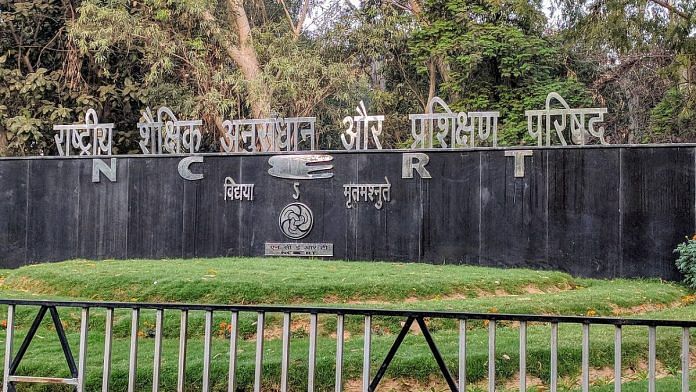New Delhi: Creation of gender-neutral toilets in schools, promoting gender-neutral uniforms and mixed rows of students (girls and boys) are some of the suggestions that were part of a manual that the National Council of Educational Research and Training (NCERT) had put out to sensitise teachers about transgender students. It also explained the meaning of terms such as Cisgender, Agender and Gender fluid among others to help educate the teachers.
The manual, which was put up on the council’s official website in the first week of November was, however, pulled down last Thursday after the council received a rap from the National Commission for Protection of Child Rights (NCPCR).
On 2 November, the NCPCR wrote to NCERT saying it had received complaints against the contents of the teaching manual. The child rights body said it was taking suo motu cognisance in the matter in relation to deprivation and violation of child rights.
In the letter, NCPCR also asked NCERT to “take appropriate action to rectify the anomalies in the document” and verify the antecedents of the drafting members.
“The text of the manual suggests gender-neutral infrastructure for children that does not commensurate with their gender realities and basic needs. Also, the idea of creating and removing binaries shall deny them equal rights of children of diverse biological needs. Second, this approach will expose children to unnecessary psychological trauma due to contradictory environments at home and in school,” NCPCR chairperson Priyank Kanoongo said in the letter to NCERT.
“It is also highlighted in the manual (chapter 3) that teachers are suggested to discuss with students about puberty blockers and its availability for adolescents. Further, the background and qualifications of the members of the drafting committee was not verified,” the NCPCR letter added.
Following the NCPCR rap, the material no longer exists on the NCERT official website.
The training material titled “Inclusion of Transgender Children in School Education: Concerns and Roadmap”, had been prepared by the Department of Gender Studies, NCERT.
ThePrint reached NCERT director Sridhar Srivastava through text and email for a response but there was no response till the time of publishing this report.
Also read: CBSE lets Class 9 & 10 students do experiments at home, teachers welcome ‘self-learning’
What did the manual say?
According to the manual, accessed by ThePrint, the training material was “designed for sensitisation of teachers and teacher educators regarding aspects of gender diversity keeping gender-nonconforming and transgender children at centre stage”.
It adds that the “mandate is to integrate these children in the school system and provide them an appropriate learning environment”.
The manual explains various gender terms such as cisgender, which it defines as an adjective for those individuals whose gender identity is same as their sex assigned at birth. It also notes that Agender is “being without a gender identity or being gender neutral, i.e. identifying oneself as neither man nor woman”, and defines gender fluid as “non binary gender identity that’s not fixed and is capable of changing over time”.
While explaining these terms, the manual has a note saying, “It is important to note that terms used by the healthcare community and Transgender and Gender-Nonconforming Community are constantly changing and progressing. Gender queer, non-binary, and gender-nonconforming are some terms used to describe a person whose gender identity does not match with the binary model of gender like man/woman, male/female or boy/girl. It is pertinent to keep a track of the terms in practice.”
Gender-neutral environment in schools
Further, the manual offers suggestions to teachers and schools to create a gender neutral teaching environment.
“Separate rows for boys and girls during assembly, school functions, seating arrangements in classrooms; gender wise separate uniforms, working groups for assignments, excursions, etc., should be discontinued,” the manual says. “Mixed groups should be allowed, gender neutral uniforms can be introduced, etc.”
It further adds that all teaching and non-teaching staff should be sensitised “on concerns of transgender students; how to end their discrimination, isolation and harassment; transgender sensitive behavior, etc. and to curb the trans-phobic behavior among the school community”.
It also talks about curricular reforms, adding that any bias against transgender persons, if any, should be eliminated from the textbooks and other teaching-learning material.
The manual also says that there must be regular monitoring of schools “for gender equality with specific indicators on transgender equality”. The parameters for the evaluation, the manual says, may include, “safety and security, physical environment, curriculum and classroom processes, teaching and learning material, counselling and support services and involvement of parents and community”.
(Edited by Arun Prashanth)
Also read: ‘My daughter’s studies can wait’: Covid pushes girl child out of school as family incomes drop



